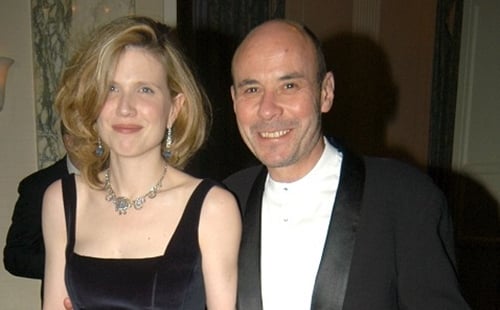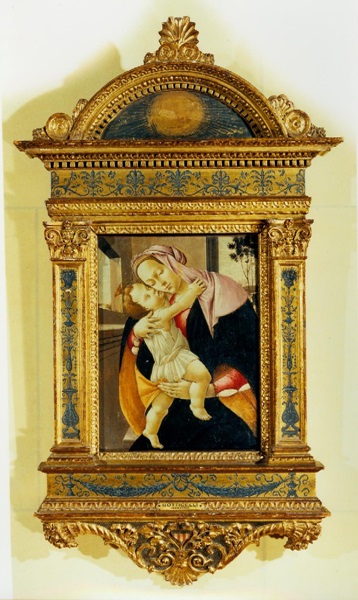Galleries
Will Larry Salander’s Fraud Victims Get Their Money Back?
Court hearing this Tuesday for former gallery director who owes $1.65 million of restitution.

Court hearing this Tuesday for former gallery director who owes $1.65 million of restitution.

Philip Boroff

In early 2007, Earl Davis made a devastating discovery. Salander-O’Reilly Galleries, run by his friend Lawrence Salander, had secretly sold more than 90 artworks created by his father, Stuart Davis. Davis owned them. The looting was a financial blow and decimated Davis’s ability to initiate exhibits and promote the legacy of his father, who died in 1964. At Salander’s 2010 sentencing for stealing $120 million from clients and investors, Davis said he would’ve preferred being robbed at gunpoint.
The theft still stings. “Time may have the ability to heal all wounds, but such profound personal betrayal is timeless,” Davis said last week in an email. He added that “it’s been more than a little frustrating and disappointing” that the gallery’s nearly seven-year-old bankruptcy continues without any payments to creditors, who have filed claims saying they are owed almost $300 million.
Ronald Spencer, chairman of the art law practice at Carter Ledyard & Milburn LLP and a trustee of the Lachaise Foundation, which promotes the legacy of sculptor Gaston Lachaise, said he’s not surprised creditors have recovered only art. When the gallery failed, “there was no cash, just a lot of art,” Spencer said in an interview. “What was left was stuff that was harder to sell.”
In criminal court, Davis and other victims may see some recovery. On March 26, Leigh Morse, the Salander-O’Reilly director convicted of defrauding artist estates by selling work without informing them, lost her second appeal. She’s expected this coming Tuesday, April 22, at a hearing regarding the $1.65 million of restitution she was ordered to pay, said Diem Tran, a spokeswoman for Manhattan District Attorney Cyrus Vance, Jr. When reached at her Upper East Side gallery, Leigh Morse Fine Arts, Morse declined to comment.
The 64-year-old Salander is serving a six-to-18-year sentence at Mid-State Correctional Facility, north of Utica, New York.
Salander got his start in antiques and in his prime was “one of the kings of American modernism,” a rival dealer said. Roger Kimball, in a 2005 Wall Street Journal column, had called Salander-O’Reilly “a commercial art gallery that feels like a museum.” The luxury magazine Robb Report rated it the top gallery in the world. Salander did business with the likes of John McEnroe, New York Observer publisher Arthur Carter (whose sculptures had been exhibited at the gallery), Hester Diamond (the art collector mom of Beastie Boy Mike D.) and Robert De Niro, who consigned art by his father, Robert De Niro, Sr. Salander was in the midst of planning his 580th exhibition in October 2007 when a judge padlocked the doors on the ornate 71st Street space. According to a cascade of complaints filed in New York State Supreme Court, Salander-O’Reilly fell behind on its $154,000-a-month rent, sold consigned work without permission, and orchestrated art-related ponzi schemes.
Upon pleading guilty to grand larceny and fraud, in 2010, Salander admitted to misleading investors about phony art resale schemes, selling art without remitting proceeds, and submitting fraudulent loan applications to Bank of America. With seven children from two marriages, he lived like his best clients, flying on private plans and splitting his time at a townhouse he owned near the Metropolitan Museum of Art and a weekend home in Millbook, New York. The gallery’s flawed business model in the last years was “premised, in part, on the belief that there is an undervalued market for Renaissance art due to the lack of recognition of the inherent value and importance of art from that period,” a bankruptcy filing says. Salander helped form a $45 million investment group, Renaissance Art Investors, aided by a $15 million line of credit from First Republic Bank. And the bank loaned the gallery more than $25 million and loaned Salander and his now ex-wife, Julie Dowden, many millions.
An Impulsive Collector
Salander collected compulsively, especially European art and tapestries from the 12th to early 18th centuries. This proved imprudent. The work was difficult to authenticate and never usurped modern and contemporary as collectors’ alternative investment of choice. At a 2010 Christie’s sale of art recovered from the gallery, a third of the 128 lots went unsold. The top lot, $262,400 for The Agony in the Garden, was attributed to “the studio of El Greco.”
Sales such as this, and subsequent sales nationwide of art Salander collected, haven’t raised enough to pay creditors given the expense of the bankruptcy. “There weren’t the assets to make it possible [to pay the creditors],” said Lawrence Sunden, a Harrington Park, New Jersey, graphic designer who sits on a creditors committee and is owed more than $900,000 for work he did for Salander. “Everybody lost out on this.”
The scandal prompted the state legislature in 2012 to strengthen New York’s Art and Cultural Affairs law governing dealers’ relationships with artists and their heirs. The revised law more explicitly requires dealers to deposit into a trust account proceeds of sales on behalf of an artist or heir, said Judith Wallace, who practices art law at Carter Ledyard. It also established misdemeanor criminal penalties for dealers who improperly commingle funds, and it gives artists the right to seek attorneys’ fees when they sue.
Thomas C. Danziger, with Danziger, Danziger & Muro, called the revision an important improvement but said increased regulation alone wouldn’t stop another Salander. “Look at Wall Street,” he said in a telephone interview. “There are plenty of shenanigans, with all the regulations in the world. It’s not just a question about regulation. It’s because the temptation is there.”
When Salander-O’Reilly began imploding, some dealers fretted the scandal would erode confidence in the art market. Spencer said that didn’t happen because Salander was regarded as a bad apple and not representative.
“Salander was all about thievery,” Spencer said in a telephone interview. “What’s new about that? It’s been going for a few thousand years.”
Robert De Niro Testifies
In July 2011, New York Supreme Court Judge Michael Obus said at Morse’s sentencing that when clients had asked about sales of their work, Morse had stonewalled them and betrayed their trust. Morse said in court that she was sorry she hadn’t been forthright and that she believed Salander would pay the gallery’s debts. Ed Shein, a New England art dealer and collector and friend of hers, said having to report for four months of weekend incarceration pummeled her reputation, as did Robert De Niro testifying at her trial, even though she was later acquitted of stealing from the actor.
“This has ruined her life,” he said of Morse, whom he called honest. “It’s been impossible for her to sell. She has no money.”
Shein blanched at the possibility that the 58-year-old, who cares for an ailing husband, may be ordered to sell her apartment near Columbia University to pay restitution. “To take the apartment from her is outrageous,” he said. “How is she going to be an art dealer if she doesn’t have a place to live in New York?”
Davis declined to respond to Shein’s comments. He said the $1 million she was ordered to pay him wouldn’t come close to compensating for his legal expenses or the Salander-O’Reilly losses that she participated in and he suffered. But he added: “I look forward to her finally being held accountable by the court to meet her obligations.”
The Bankruptcy Winds Down
The bankruptcy is winding down with a bang. Last week, Cecelia Morris, the chief judge of the US Bankruptcy Court in New York’s Southern District who’s overseeing the gallery case, said she’ll preside over a trial convened explicitly to decide the fate of a painting recovered at the gallery; it is attributed to Botticelli and titled Madonna and Child. The Channel Islands–based consignor, Kraken Investments, has battled for years to retrieve it. And the bankruptcy trustee, Alan Jacobs, seeks to sell the artwork, which has been valued at $9.5 million. Lawyers involved expect a one- or two-day trial in August or September.

Sandro Botticelli Madonna and Child (1485) Photo: Courtesy Kraken Investments, Panama.
As for Salander, he is eligible for “merit” release as early as July 2015. His first parole hearing is scheduled for March 2015. On the first day of the seventh month after his release, he must begin paying restitution, according to an order filed in criminal court.
Earl Davis declined to speculate about whether Salander will make good on the $114.9 million of restitution he owes.